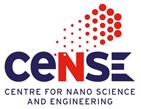Courses Offered
NE 222 (AUG) 3:0
MEMS: Modeling, Design, and Implementation
This course discusses all aspects of MEMS technology – from modeling, design, fabrication, process
integration, and final implementation. Modeling and design will cover blockset models of MEMS
transducers, generally implemented in SIMULINK or MATLAB. Detailed multiphysics modeling may
require COMSOL simulations. The course also covers MEMS specific micromachining concepts
such asbulk micromachining, surface micromachining and related technologies, micromachining for high aspect ratio microstructures,glass and polymer micromachining, and wafer bonding
technologies. Specific case studies covered include Pressure Sensors, Microphone, Accelerometers,
Comb-drives for electrostatic actuation and sensing, and RF MEMS. Integration of micromachined
mechanical devices with microelectronics circuits for complete implementation is also discussed.
Recommended Books:
NE 223 (JAN) 2:1
Analog Circuits and Embedded System for Sensors
The Internet of Things (IoT) revolution is driven by confluence of high performance sensors, powerful computation power of microcontrollers and wireless
technology. The performance of sensors is not only governed by inherent characteristics of sensor such as sensitivity, linearity and response time but also the
front end interfacing analog circuit and backend processing in digital domain. The goal of this course is to explore the electronics that needs to be
incorporated to create sensor systems and to learn the trade-offs in design of circuits to maximize performance subject to real life design constraints.
Recommended Books:
NE 303 (AUG) 3:0
Semiconductor Process Integration
This course discusses advanced semiconductor concepts, interband/intraband transitions, defects, donor-acceptor pair transitions, excitons/absorption spectra, Photoluminescence, dynamics of photoconductivity, III-nitrides and polarization, photodetectors, LEDs, semiconductor lasers, Electro-absorption modulators, solar radiation, PV basics, silicon p-n junction solar cell in details, thin film solar cells (amorphous Si PV, chalcogenides), organic PV, DSSC and perovskite PV, Beyond SQ limit.
